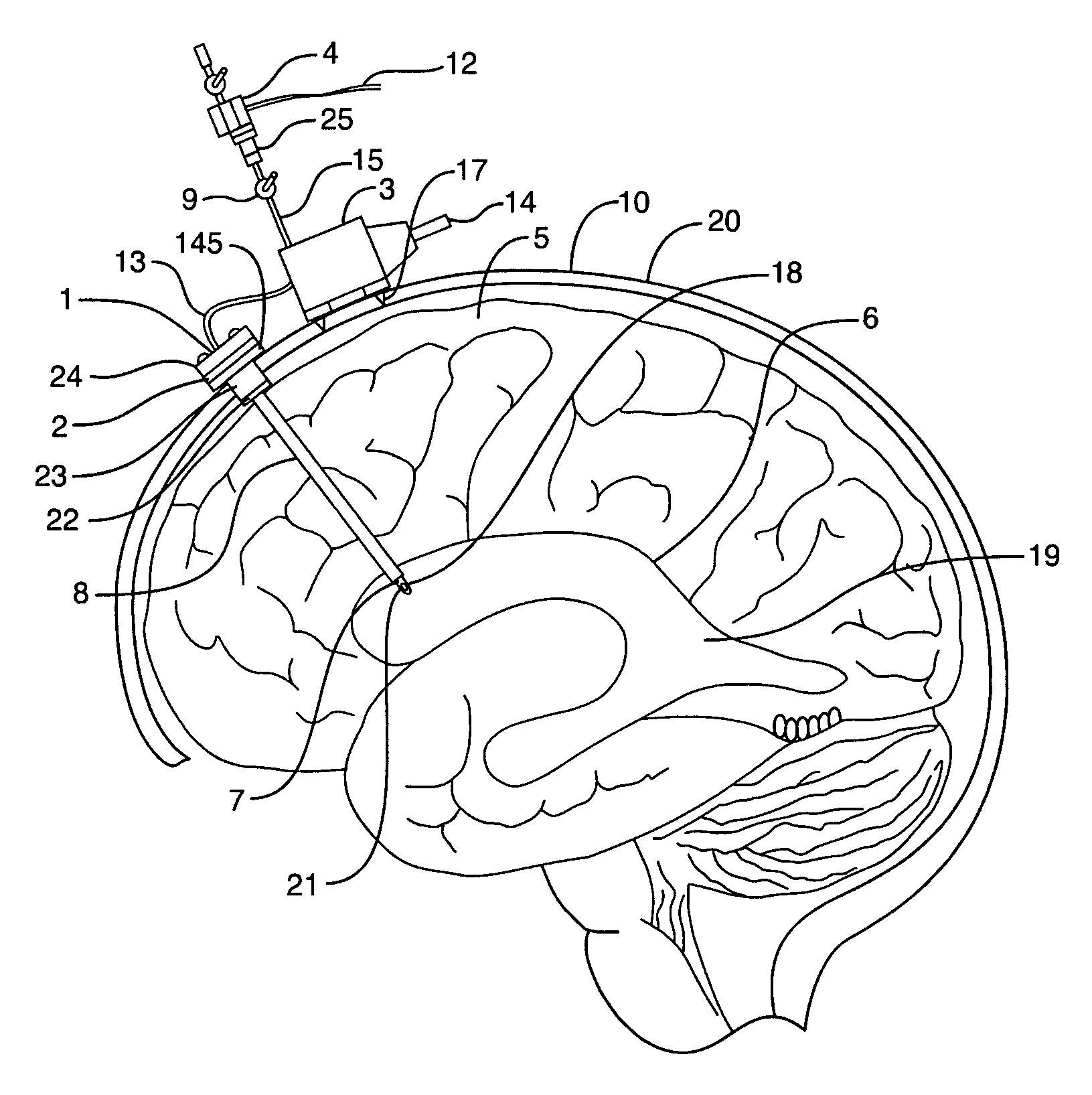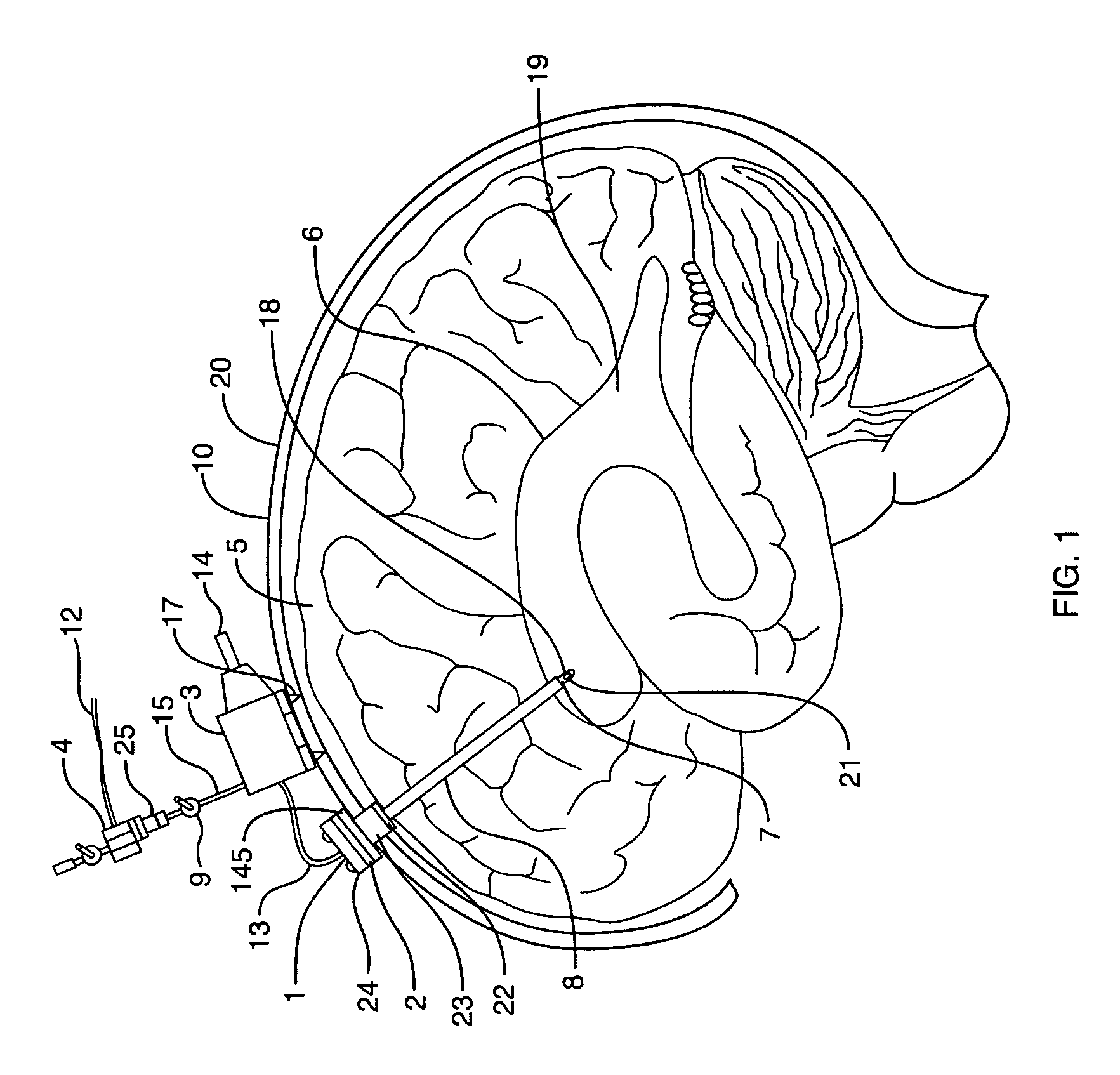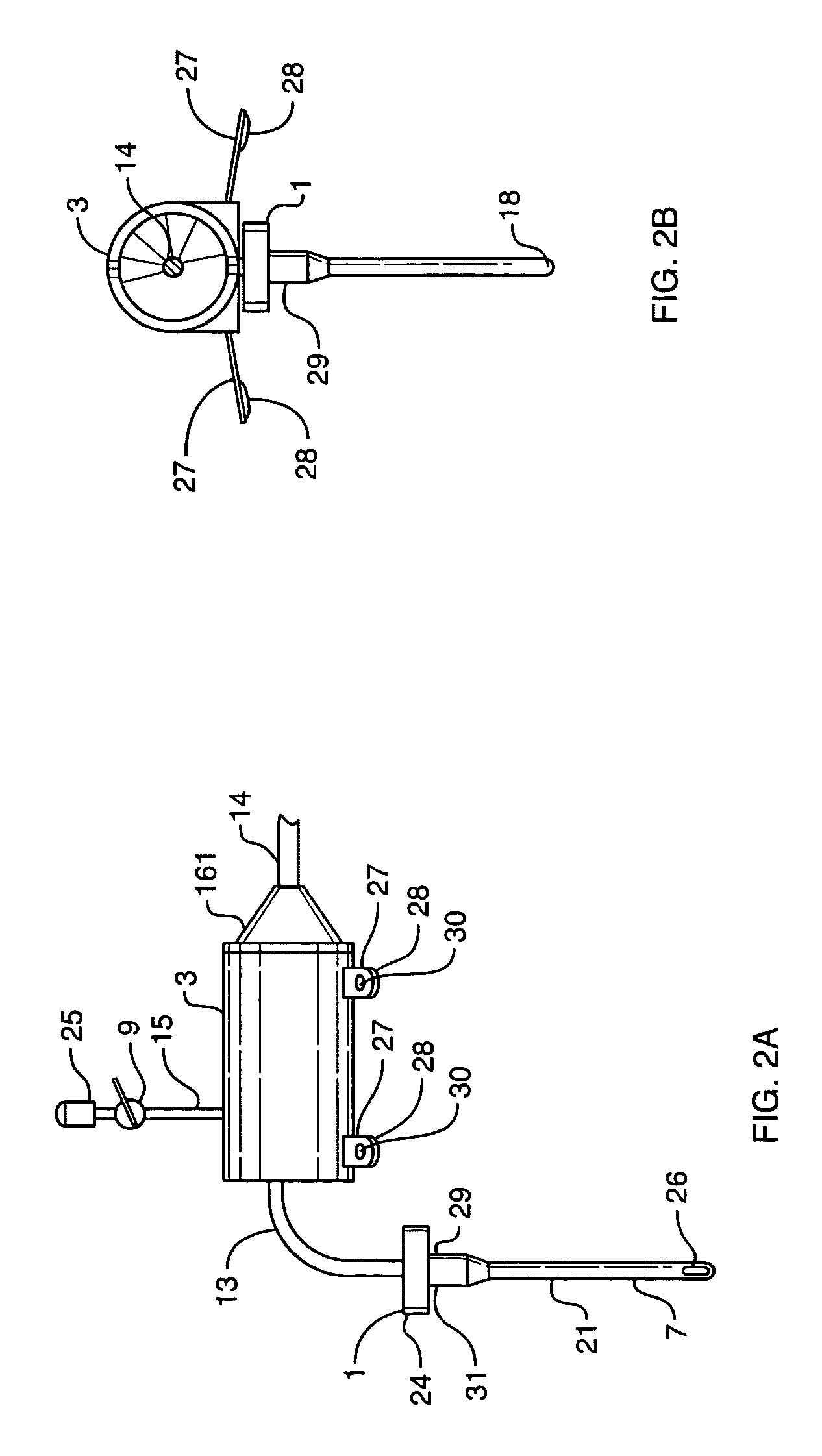Method and device for reducing secondary brain injury
- Summary
- Abstract
- Description
- Claims
- Application Information
AI Technical Summary
Benefits of technology
Problems solved by technology
Method used
Image
Examples
Embodiment Construction
[0050]FIG. 1 depicts, in simplified form, a section of the head 20 with a brain probe 1 and introducer sheath 2 in operational position and cooling assembly 3 mounted on the head 20 with self-tapping bone screws 17. The distal end 7 of probe 1, and the distal end of introducer sheath 2 is located in a lateral ventricle of the brain 6. Probe tube 13 connects probe 1 to cooling assembly 3 and provides fluid communication from the probe 1 to cooling assembly 3. The distal end 7 of probe 1 contains a thermocouple 18 (FIG. 2B), which measures the temperature of the cerebrospinal fluid 19 contained in ventricle 6. The shaft 21 of probe 1 passes through the introducer sheath 2 introducer sheath tube 8 and connects the distal end 7 of probe 1 to the sheath docking collar 24 of probe 1 (See FIG. 8). Probe shaft 21 provides fluid communication from the ventricle 6 to probe tube 13 which therefore provides fluid communication from ventricle 6 to cooling assembly 3. The probe and introducer she...
PUM
 Login to View More
Login to View More Abstract
Description
Claims
Application Information
 Login to View More
Login to View More - R&D
- Intellectual Property
- Life Sciences
- Materials
- Tech Scout
- Unparalleled Data Quality
- Higher Quality Content
- 60% Fewer Hallucinations
Browse by: Latest US Patents, China's latest patents, Technical Efficacy Thesaurus, Application Domain, Technology Topic, Popular Technical Reports.
© 2025 PatSnap. All rights reserved.Legal|Privacy policy|Modern Slavery Act Transparency Statement|Sitemap|About US| Contact US: help@patsnap.com



